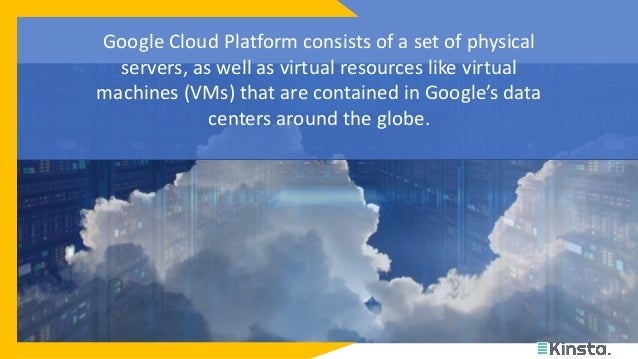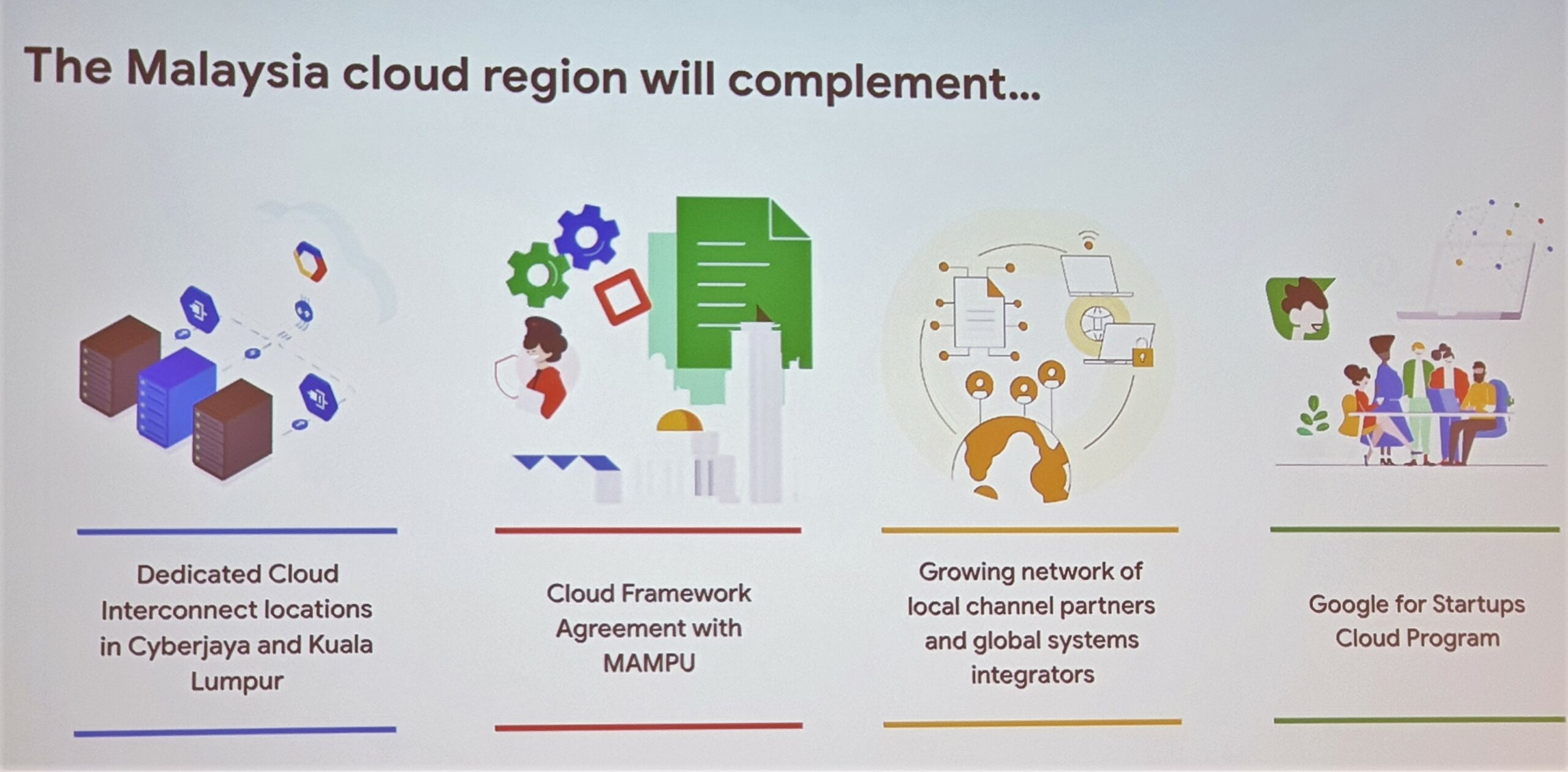What is Google Cloud Global Infrastructure?
Google Cloud Global Infrastructure is a network of data centers and points of presence (PoPs) that provide a global, scalable, and highly available infrastructure for Google Cloud users. The infrastructure consists of three main components: regions, zones, and PoPs. Regions are geographic locations where Google has multiple data centers, while zones are individual data centers within a region. PoPs, on the other hand, are smaller locations that provide network connectivity and caching services to reduce latency and improve performance.
These components work together to provide a seamless and efficient experience for Google Cloud users. For example, if a user deploys an application in a specific region, they can choose to replicate it in other regions to ensure high availability and low latency for their users. Similarly, if a user stores data in Google Cloud Storage, they can choose to distribute it across multiple regions and zones to protect it from failures and outages. PoPs, meanwhile, help to ensure that data and applications are delivered quickly and reliably to users around the world.
Google Cloud Global Infrastructure is designed to meet the needs of businesses and organizations of all sizes and industries. With its global coverage, high-performance network, and flexible pricing models, Google Cloud Global Infrastructure provides a solid foundation for digital transformation and innovation. By leveraging the power of Google Cloud Global Infrastructure, businesses and organizations can focus on building and deploying applications and services that meet the needs of their users, without worrying about the underlying infrastructure.
The Importance of Google Cloud Global Infrastructure
Google Cloud Global Infrastructure is designed to provide businesses and organizations with a highly available, scalable, and low-latency infrastructure for deploying and managing applications and services. By using Google Cloud Global Infrastructure, businesses can improve their performance, reliability, and resilience in several ways.
Firstly, Google Cloud Global Infrastructure offers low latency, which means that applications and services can be delivered quickly and efficiently to users around the world. This is achieved through Google’s global network of data centers and points of presence (PoPs), which are strategically located in different regions to provide optimal coverage and connectivity. By using Google Cloud Global Infrastructure, businesses can reduce the distance between their applications and their users, resulting in faster load times and improved user experience.
Secondly, Google Cloud Global Infrastructure provides high availability, which means that applications and services can continue to operate even in the event of failures or outages. This is achieved through Google’s use of multiple zones and regions, which allows businesses to deploy their applications and services across different locations. By using Google Cloud Global Infrastructure, businesses can ensure that their applications and services are always available, even if one or more zones or regions experience issues.
Thirdly, Google Cloud Global Infrastructure offers disaster recovery, which means that businesses can quickly and easily recover their applications and services in the event of a disaster. This is achieved through Google’s use of backup and replication technologies, which allow businesses to create copies of their applications and services in different zones and regions. By using Google Cloud Global Infrastructure, businesses can ensure that their data and applications are protected from disasters, and that they can quickly recover in the event of an outage.
In summary, Google Cloud Global Infrastructure provides businesses and organizations with a highly available, scalable, and low-latency infrastructure for deploying and managing applications and services. By using Google Cloud Global Infrastructure, businesses can improve their performance, reliability, and resilience, and ensure that their applications and services are always available, even in the event of failures or disasters. By taking advantage of the benefits of Google Cloud Global Infrastructure, businesses can focus on delivering value to their users, rather than worrying about the underlying infrastructure.
How to Use Google Cloud Global Infrastructure
Google Cloud Global Infrastructure provides a powerful and flexible platform for deploying and managing applications and services. Here’s a step-by-step guide on how to use Google Cloud Global Infrastructure to deploy and manage your applications and services:
- Create a Google Cloud account: To get started with Google Cloud Global Infrastructure, you need to create a Google Cloud account. Go to the Google Cloud website and click on the “Try it free” button to create an account.
- Create a new project: Once you have created a Google Cloud account, you need to create a new project. Go to the Google Cloud Console and click on the “Select a project” drop-down menu. Click on the “New Project” button to create a new project.
- Enable the Compute Engine API: To use Google Cloud Global Infrastructure, you need to enable the Compute Engine API. Go to the Compute Engine page in the Google Cloud Console and click on the “Enable” button to enable the API.
- Create a virtual machine (VM): Once you have enabled the Compute Engine API, you can create a virtual machine (VM) to run your application or service. Go to the VM instances page in the Google Cloud Console and click on the “Create” button to create a new VM.
- Choose a region and zone: When creating a VM, you need to choose a region and zone. A region is a geographical location where Google has multiple data centers, while a zone is a single data center within a region. Choose a region and zone that is closest to your users to reduce latency and improve performance.
- Configure the VM: Once you have chosen a region and zone, you need to configure the VM. Choose an image, machine type, and boot disk that is appropriate for your application or service.
- Secure the VM: To ensure the security of your application or service, you need to secure the VM. Configure firewall rules, SSL certificates, and other security measures to protect your VM from unauthorized access.
- Monitor the VM: To ensure the availability and performance of your application or service, you need to monitor the VM. Use Google Cloud Monitoring and Google Cloud Logging to monitor the VM and identify any issues.
Google Cloud Global Infrastructure can be used for a variety of use cases, such as content delivery, data storage, and machine learning. For example, you can use Google Cloud CDN to cache and deliver content to users around the world, or you can use Google Cloud Storage to store and access data from anywhere in the world. You can also use Google Cloud Machine Learning to build and deploy machine learning models in the cloud.
Comparing Google Cloud Global Infrastructure with Other Cloud Providers
When it comes to choosing a cloud provider, businesses and organizations have a variety of options to choose from, including Google Cloud, Amazon Web Services (AWS), and Microsoft Azure. Each provider offers a unique set of features, benefits, and pricing models, which can make it difficult to determine which provider is the best fit for your needs.
In this section, we will compare Google Cloud Global Infrastructure with other cloud providers in terms of global coverage, network performance, and pricing. We will highlight the strengths and weaknesses of each provider to help you make an informed decision.
Global Coverage
Google Cloud Global Infrastructure has a strong global presence, with 24 regions, 73 zones, and over 100 points of presence (PoPs) around the world. This extensive network allows Google Cloud users to deploy their applications and services close to their users, reducing latency and improving performance.
AWS has a similar global coverage, with 24 regions, 77 availability zones, and over 200 points of presence. Microsoft Azure, on the other hand, has 60 regions, with plans to add more in the future. While Azure has a smaller global footprint than Google Cloud and AWS, it still offers a wide range of options for businesses and organizations looking to deploy their applications and services globally.
Network Performance
Google Cloud Global Infrastructure offers a high-performance network, with private fiber optic cables that connect its data centers around the world. This network provides low latency and high bandwidth, allowing Google Cloud users to quickly and easily transfer data between regions and zones.
AWS and Microsoft Azure also offer high-performance networks, with private fiber optic cables and global networks that connect their data centers. However, Google Cloud’s network is often considered to be faster and more reliable than its competitors, thanks to its extensive global coverage and advanced network technologies.
Pricing
Google Cloud Global Infrastructure offers competitive pricing for its services, with a variety of pricing models that cater to different business needs. Google Cloud users can choose from on-demand pricing, sustained use discounts, committed use discounts, and custom pricing options.
AWS and Microsoft Azure also offer competitive pricing for their services, with similar pricing models and discount options. However, Google Cloud’s pricing is often considered to be more flexible and transparent than its competitors, with clear pricing structures and easy-to-understand billing options.
In conclusion, Google Cloud Global Infrastructure offers a strong global coverage, high-performance network, and competitive pricing, making it a great option for businesses and organizations looking to deploy their applications and services globally. However, it’s important to compare all cloud providers and choose the one that best fits your specific needs and requirements.
Best Practices for Using Google Cloud Global Infrastructure
Google Cloud Global Infrastructure is a powerful and flexible platform that offers many benefits to businesses and organizations. However, to get the most out of this platform, it’s important to follow best practices for designing, deploying, and managing applications and services on Google Cloud.
Design for Resilience
One of the key benefits of Google Cloud Global Infrastructure is its ability to provide high availability and disaster recovery capabilities. To take advantage of these capabilities, it’s important to design applications and services with resilience in mind. This means using multiple zones and regions to distribute workloads, and implementing load balancing and auto-scaling to handle traffic spikes and failures.
Optimize for Performance
Google Cloud Global Infrastructure offers a high-performance network with low latency and high bandwidth. To take advantage of this network, it’s important to optimize applications and services for performance. This means using content delivery networks (CDNs) to cache and deliver content, and implementing caching and memoization to reduce latency and improve response times.
Monitor for Availability
To ensure high availability and prevent downtime, it’s important to monitor applications and services on Google Cloud. This means using tools like Google Cloud Monitoring and Google Cloud Logging to track performance metrics, identify issues, and receive alerts when problems occur. By monitoring applications and services, businesses and organizations can quickly identify and resolve issues before they impact users.
Implement Security Best Practices
Security is a critical consideration for businesses and organizations using Google Cloud Global Infrastructure. To ensure the security of applications and services, it’s important to implement security best practices. This means using encryption to protect data in transit and at rest, implementing access controls and authentication, and regularly patching and updating systems to address vulnerabilities.
Leverage Managed Services
Google Cloud Global Infrastructure offers a wide range of managed services that can help businesses and organizations simplify application and service deployment and management. These services include Google Kubernetes Engine for container orchestration, Google Cloud SQL for database management, and Google Cloud Functions for serverless computing. By leveraging these managed services, businesses and organizations can reduce the complexity and overhead of managing infrastructure, and focus on delivering value to users.
In conclusion, following best practices for using Google Cloud Global Infrastructure can help businesses and organizations get the most out of this powerful and flexible platform. By designing for resilience, optimizing for performance, monitoring for availability, implementing security best practices, and leveraging managed services, businesses and organizations can ensure high availability, improve performance, and reduce costs.
Challenges and Limitations of Google Cloud Global Infrastructure
While Google Cloud Global Infrastructure offers many benefits, there are also challenges and limitations that businesses and organizations should be aware of. Here are some of the most common challenges and limitations, and how to mitigate them:
Data Sovereignty
Data sovereignty is a major concern for businesses and organizations, particularly those in regulated industries. Data sovereignty refers to the concept that data is subject to the laws and regulations of the country in which it is located. Google Cloud Global Infrastructure has data centers in many countries around the world, which can make it difficult to ensure compliance with data sovereignty regulations.
To mitigate this risk, businesses and organizations should work closely with Google Cloud to ensure that their data is stored and processed in compliance with local regulations. Google Cloud provides tools and features to help businesses and organizations manage data sovereignty, such as data regionalization and data residency.
Compliance
Compliance is another major concern for businesses and organizations using cloud infrastructure. Compliance refers to the need to adhere to industry standards, regulations, and best practices. Google Cloud Global Infrastructure is compliant with many industry standards and regulations, but businesses and organizations are ultimately responsible for ensuring compliance.
To mitigate this risk, businesses and organizations should work closely with Google Cloud to ensure that their applications and services are compliant with relevant regulations and standards. Google Cloud provides tools and features to help businesses and organizations manage compliance, such as audit logs and security controls.
Security
Security is a critical concern for businesses and organizations using cloud infrastructure. Google Cloud Global Infrastructure provides many security features, such as encryption, access controls, and security logging. However, businesses and organizations are ultimately responsible for securing their applications and services.
To mitigate this risk, businesses and organizations should implement strong security practices, such as using secure passwords, enabling two-factor authentication, and regularly patching and updating systems. Google Cloud provides tools and features to help businesses and organizations manage security, such as security scanning and vulnerability assessment.
Conclusion
Google Cloud Global Infrastructure is a powerful and flexible platform that offers many benefits to businesses and organizations. However, it’s important to be aware of the challenges and limitations of using this platform, such as data sovereignty, compliance, and security. By following best practices and working closely with Google Cloud, businesses and organizations can mitigate these risks and ensure compliance with regulations and standards.
Future Trends and Developments in Google Cloud Global Infrastructure
Google Cloud Global Infrastructure is constantly evolving to meet the changing needs of businesses and organizations. Here are some of the most exciting trends and developments to watch out for in the coming years:
Edge Computing
Edge computing is a new approach to computing that involves processing data closer to the source, rather than in a centralized data center. This approach can reduce latency, improve performance, and enable new use cases, such as real-time analytics and IoT applications. Google Cloud Global Infrastructure is well-positioned to support edge computing, with a global network of points of presence (PoPs) that can be used to process data closer to the source.
Quantum Computing
Quantum computing is a new approach to computing that uses quantum bits, or qubits, to perform calculations. Quantum computing has the potential to solve complex problems that are currently beyond the reach of classical computers. Google Cloud Global Infrastructure is investing in quantum computing, with a quantum computing service that allows businesses and organizations to experiment with this technology.
Artificial Intelligence (AI)
Artificial intelligence (AI) is a set of technologies that enable machines to perform tasks that would normally require human intelligence, such as image recognition and natural language processing. Google Cloud Global Infrastructure is investing in AI, with a range of AI services that can be used to build intelligent applications and services. These services include machine learning, computer vision, and natural language processing.
Challenges and Opportunities
While these trends and developments offer many opportunities, they also present challenges. For example, edge computing requires new approaches to security and management, while quantum computing requires new algorithms and software. Businesses and organizations that are able to navigate these challenges and take advantage of these trends will be well-positioned to succeed in the digital age.
Conclusion
Google Cloud Global Infrastructure is a powerful and flexible platform that offers many benefits to businesses and organizations. By staying up-to-date with the latest trends and developments, businesses and organizations can take advantage of new opportunities and stay ahead of the competition. Whether you’re looking to build intelligent applications, process data at the edge, or experiment with quantum computing, Google Cloud Global Infrastructure has the tools and services you need to succeed.
Conclusion: The Value of Google Cloud Global Infrastructure
Google Cloud Global Infrastructure is a powerful and flexible platform that offers many benefits to businesses and organizations. By using this global, scalable, and highly available infrastructure, businesses can improve their performance, reliability, and resilience, and take advantage of new opportunities for digital transformation and innovation.
One of the key benefits of Google Cloud Global Infrastructure is its ability to provide low latency and high availability. With a global network of regions, zones, and points of presence, businesses can deploy their applications and services closer to their users, reducing latency and improving performance. This is particularly important for businesses that rely on real-time data or applications, such as financial services or e-commerce.
Another benefit of Google Cloud Global Infrastructure is its disaster recovery capabilities. With multiple regions and zones, businesses can ensure that their applications and services are available even in the event of a disaster or outage. This can help businesses to minimize downtime and maintain business continuity, even in the face of unexpected events.
To get the most out of Google Cloud Global Infrastructure, businesses should follow best practices for designing, deploying, and managing their applications and services. This includes designing for resilience, optimizing for performance, and monitoring for availability. By following these best practices, businesses can ensure that their applications and services are scalable, reliable, and secure, and can take advantage of the full range of features and benefits offered by Google Cloud.
However, businesses should also be aware of the challenges and limitations of using Google Cloud Global Infrastructure. This includes issues related to data sovereignty, compliance, and security. By working closely with Google Cloud and following best practices, businesses can mitigate these risks and ensure their compliance with regulations and standards.
Overall, Google Cloud Global Infrastructure is a valuable tool for businesses and organizations looking to improve their performance, reliability, and resilience, and take advantage of new opportunities for digital transformation and innovation. By using this global, scalable, and highly available infrastructure, businesses can stay ahead of the curve and compete in an increasingly digital world.






